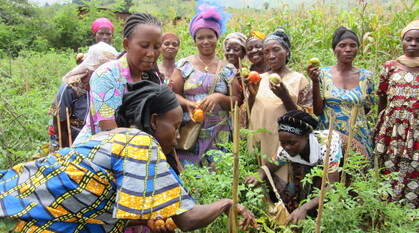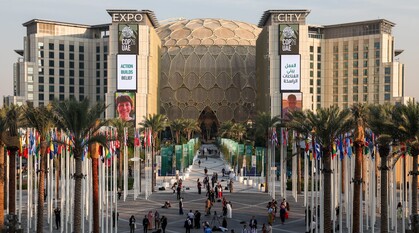Meeting for Sufferings: a creative and vibrant body?
A recent blog post raised the question of whether changes to the role of Meeting for Sufferings in 2006 had freed it up to be a more creative and vibrant body over the longer term. Stevie Krayer, a former member of Meeting for Sufferings, reflects on that question.

I was appointed to Meeting for Sufferings when its terms of reference changed from trusteeship to discerning priorities. The change was intended to be profound. Meeting for Sufferings was to become a "crucible for sharing and testing all the witness … going on throughout the Yearly Meeting and a bridge between local meetings and central work" (Yearly Meeting 2006, minute 20).
As the 2006 Yearly Meeting epistle explained, by relieving Meeting for Sufferings of the detailed work of trusteeship, we were freeing it to take on a visionary and prophetic role for the life of the Yearly Meeting.
That first year was an exciting time; the incoming membership of Meeting for Sufferings was palpably galvanised by the new visionary role and feeling motivated to do things very differently. I remember at the first meeting that for our opening worship the clerks left the table and we sat in as much of a circle as the Small Meeting House would permit. It seemed like a symbol of radical change.
Prophesy or caution?
As time went on, however, a sort of 'mission creep' happened. Agendas became heavy with reports, which there was insufficient time to absorb and understand, and the meeting spent increasing amounts of time more or less passively. As the membership began to turn over, yearly meeting by yearly meeting, it seemed that the vision of vision, as it were, slowly became lost to view. The induction offered (if any) did not seem geared to reminding existing members or explaining to new members the prophetic element of the Meeting for Sufferings remit.
I'm generalising; there were matters before us which called for deeper reflection – discernment of the Framework for Action, same-sex marriage, the call from Palestinian churches for engaging with Boycott, Divestment and Sanctions and others. However, as a body, Meeting for Sufferings went back to being cautious and conservative (small 'c'). Some Friends even seemed to think it was their job to be prudent with BYM's finances, as if Meeting for Sufferings were still the trustee body – for example, we came perilously close to vetoing BYM trustees' own suggestion that we should divest from fossil fuels.
It seems possible (though I have little objective evidence) that the problem started at Area Meeting level. Perhaps AMs and their nominations committees were not reminded about the prophetic role of Sufferings (which is easy enough to miss if you just go by the dry description in the Red Book). The advice to AMs on nominations to Meeting for Sufferings that is currently found in Quaker faith & practice 7.07 more or less encourages the appointment of reliable and experienced (read 'older') Friends who have served in numerous roles locally. It even refers to the need to have sufficient numbers of representatives who are able and willing to act as trustees of BYM if asked to serve. Admittedly it also notes the value of fresh insight and of the wider involvement of the membership, but there is little to encourage a nervous AM to support the nomination of younger or bolder Friends, or those with a good grasp of developments at national level.
Two-way communication?
Meeting for Sufferings is a meeting of representatives and has a key role to play in fostering communications throughout the yearly meeting. The model envisages fairly continuous two-way communication. The representative attends Meeting for Sufferings and reports back to their Area Meeting, leading the Friends there to engage with the topics that Sufferings is currently concerned with. At the same time, Area Meetings share their concerns and activities by sending their minutes to Meeting for Sufferings – this is their chance to take the initiative and potentially influence the national vision or direction of travel.
From what I saw, the model did not work quite as intended. While some representatives managed to get a lot of engagement from Friends in their meetings, others found it a struggle to achieve that connection. When a meeting does bring forward a carefully tested concern it can be difficult to get Sufferings as a whole to recognise the wind of the Spirit blowing and raise sail.
The changes I would like to see to our structures would be ones that make local Friends feel more ownership of or even interest in national discernment. The connection with Friends on the bench needs to be kept strong, which requires real, effective two-way communication. I look forward to hearing more about the proposal for a continuing yearly meeting and to joining with other Friends in discerning if it is the right way forward.
Read more:


